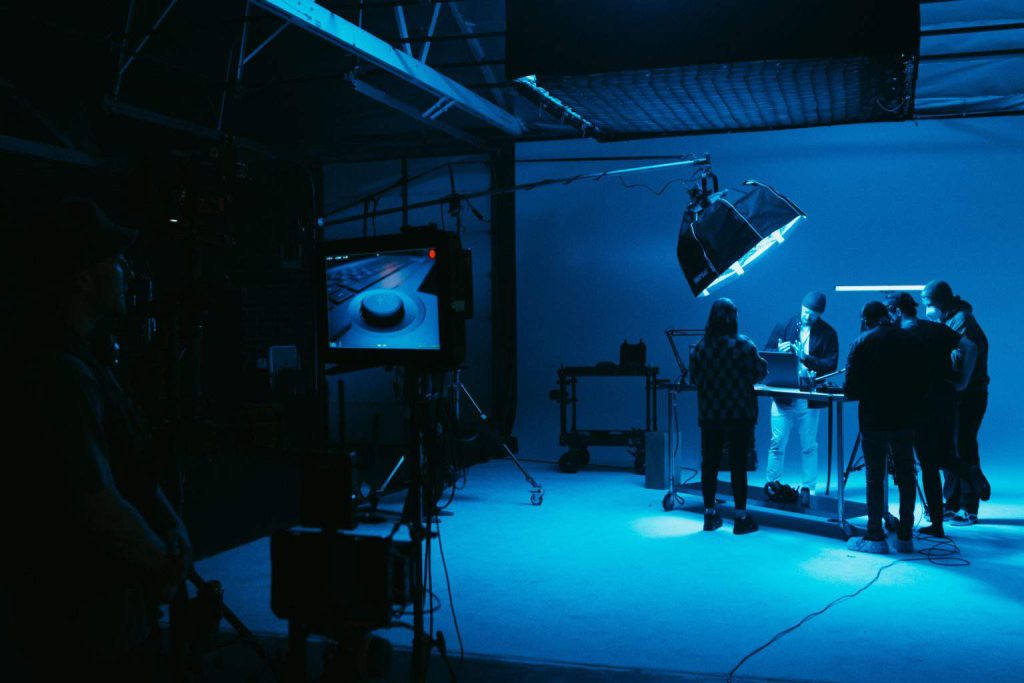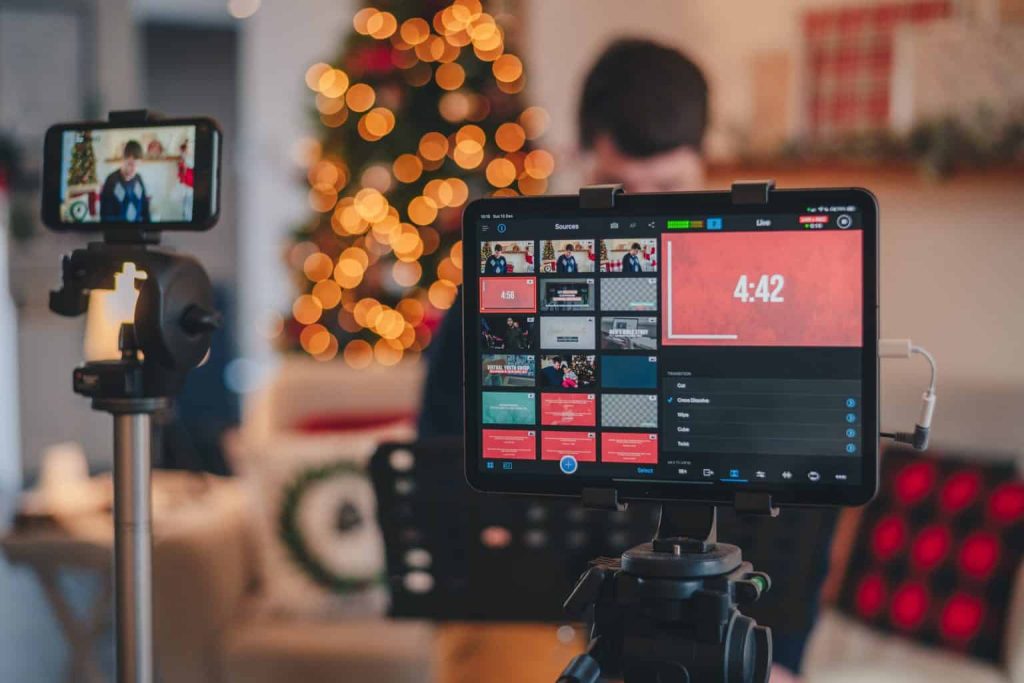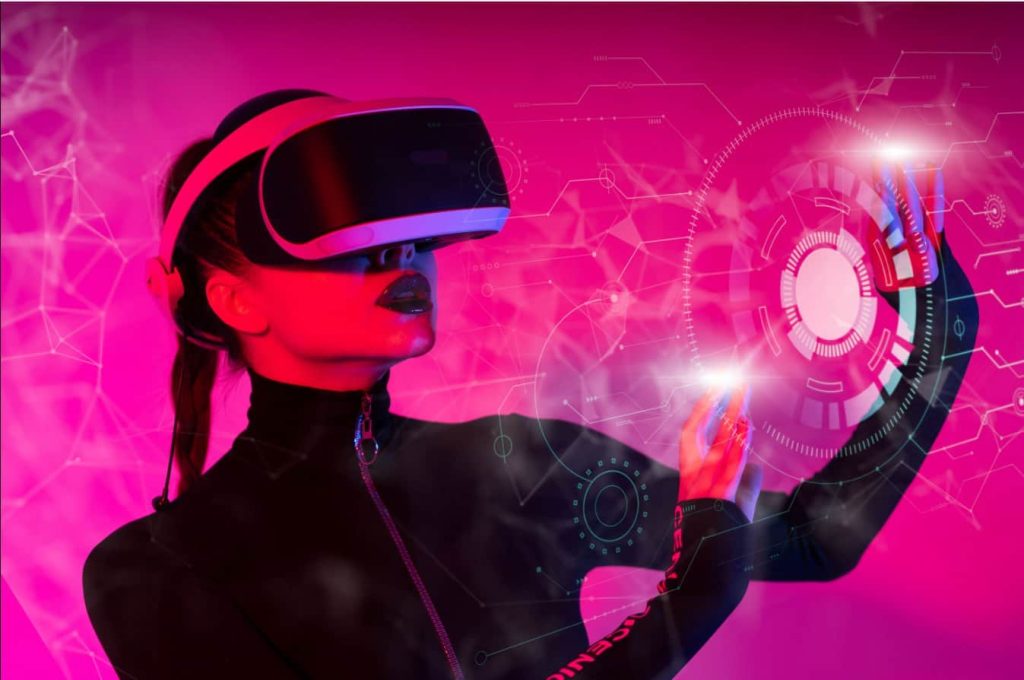
16 Jan Creating Engaging Virtual Art Tours
Virtual art tours have become a transformative force, redefining the art experience by connecting enthusiasts with cultural institutions in unprecedented ways. In our digitally interconnected era, these tours serve as a vital bridge, allowing art lovers worldwide to explore renowned collections without leaving their homes. The accessibility they provide is particularly crucial for those facing physical or financial constraints, democratizing art appreciation. These tours also enhance the educational aspect of art, incorporating multimedia elements for a more immersive and informative experience. However, challenges arise as critics argue that the digital encounter lacks the tangible and emotional aspects of physically standing before masterpieces. Striking a balance between accessibility and preserving the unique qualities of in-person art encounters remains a challenge for virtual art experiences.
Essential Elements of Engaging Virtual Art Tours

Photo by Jakob Owens
High-Quality Visuals
Ensuring an unparalleled visual experience begins with choosing the right equipment, as the selection of cameras and tools for 360° or panoramic shots significantly impacts the outcome. Attention to details such as resolution, field of view, and stability is paramount. Mastering lighting and composition further elevates the virtual art tour, experimenting with setups that accentuate artworks and create an immersive atmosphere. The result is a captivating visual journey that brings out the finest details of each piece, providing viewers with an exceptional and visually rich exploration.
Storytelling and Content
Crafting a compelling narrative flow is central to the virtual art tour’s success, guiding visitors through a curated experience that enhances their understanding and appreciation of artworks. The integration of interactive elements, such as informative overlays, labels, and audio commentaries, adds depth and context. These elements, coupled with interactive features like zoom-ins and hidden details, transform the tour into a dynamic and participatory engagement. By thoughtfully combining narrative cohesion and interactive elements, the virtual art experience becomes both immersive and meaningful.
User Experience and Accessibility
Optimizing the virtual art tour for diverse devices and platforms ensures widespread accessibility. From desktops to mobiles and VR headsets, compatibility is key to reaching a broad audience. Intuitive navigation controls and accessibility features cater to users with diverse needs, creating an inclusive experience for everyone. Additionally, offering multi-language support broadens the tour’s global appeal, welcoming individuals from different linguistic backgrounds and making the exhibition accessible to a more extensive and diverse audience.
Engagement and Connection
Fostering engagement and connection in the virtual art space involves encouraging social interaction through forums, reviews, and sharing options. Building a community around the tour enriches the experience by facilitating discussions among art enthusiasts. Hosting virtual events, artist talks, and interactive workshops in real-time enhances engagement, bringing a sense of community to the virtual art experience. Integrating the virtual tour with physical exhibitions and educational programs bridges the gap between the digital and physical art worlds, offering a more holistic and connected art experience.
Step-by-Step Guide to Creating Your Own Virtual Art Tour

Photo by Max Duzij
Step 1: Planning and Concept
Define Your Audience and Goals
Identifying and understanding your target audience is a fundamental step in creating a successful virtual art tour. Take the time to conduct thorough research on the demographics, interests, and expectations of your intended viewers. This understanding will enable you to tailor the virtual tour to their specific needs and preferences. Consider factors such as age, cultural background, and art appreciation levels to ensure that the content resonates with the audience.
Clearly articulating exhibition goals is equally crucial. Define the purpose of the virtual art tour, whether it’s to showcase a particular art movement, promote emerging artists, or provide an educational experience. These goals will serve as a guiding framework throughout the planning and execution phases, helping you stay focused on delivering a cohesive and impactful virtual tour.
Choose the Format
Selecting the right format is a pivotal decision that significantly influences the overall user experience. Whether you opt for 360° panoramas, virtual maps, or guided narratives, each format offers a distinctive way for users to engage with the art. Consider the nature of the artwork, your audience’s preferences, and the story you want to tell through the virtual tour.
360° panoramas provide an immersive experience, allowing users to explore the exhibition space as if they were physically present. Virtual maps offer a structured and navigable layout, while guided narratives provide a curated journey with a storytelling element. Choose a format that aligns seamlessly with your exhibition goals, enhancing the overall impact of the virtual art tour.
Outline the Exhibition Flow
Planning the exhibition flow is akin to designing a captivating storyline. Highlight key artworks and plan their placement within the virtual space to create a logical and engaging sequence. Consider the narrative arc you want to convey – whether it’s chronological, thematic, or based on the artists’ perspectives.
Ensure a seamless transition between artworks, maintaining the audience’s interest and curiosity throughout the virtual tour. Strive for a balance between variety and coherence, allowing users to explore different aspects of the art while maintaining a cohesive and meaningful journey. This thoughtful curation will contribute to a more immersive and memorable virtual art tour experience for your audience.
Step 2: Production and Capture
Gather Technical Equipment
Assembling the right technical equipment is a critical step in ensuring the success of your virtual art tour. Begin by carefully selecting cameras, considering factors such as resolution, lens quality, and compatibility with the chosen format. Lighting gear is equally important; choose lighting setups that complement the artworks, preventing shadows and ensuring optimal visibility. Additionally, identify and acquire any necessary accessories or support equipment, such as tripods, stabilizers, or drones, to enhance the overall production quality.
Invest in reliable editing software that suits your post-production needs. Software choices should align with the intricacies of your virtual tour format, enabling you to seamlessly edit, enhance, and arrange visual and audio elements. A well-equipped technical setup ensures that you can capture and present the artwork in the best possible light, both figuratively and literally.
Capture High-Quality Visuals
The heart of your virtual art tour lies in the visuals you capture. Pay meticulous attention to detail, as it is through these visuals that the audience will experience the artworks. Prioritize image clarity, color accuracy, and the faithful representation of textures. Consider the unique features of each artwork and employ various angles to highlight its nuances.
Mindful use of lighting is crucial during the capture process. Experiment with different lighting setups to enhance the aesthetics of the artworks, ensuring that each piece is presented in the most flattering manner. Adjust the camera settings to accommodate the specific lighting conditions of the exhibition space, maintaining consistency and cohesiveness throughout the virtual tour.
Record Audio Commentaries
Audio commentaries add a layer of depth and context to the virtual tour, enhancing the viewer’s understanding and connection with the artworks. Before recording, carefully plan the commentary script, ensuring it aligns with the overall narrative and goals of the exhibition. Consider collaborating with artists and curators to provide unique insights and perspectives.
Use high-quality recording equipment to capture clear and crisp audio. Minimize background noise and ensure a professional sound quality that complements the visual richness of the virtual tour. Strive for a balance between informative content and engaging delivery, creating an audio experience that seamlessly integrates with the visual elements, enriching the overall virtual tour experience.

Photo by Libby Penner
Step 3: Content Creation and Integration
Develop Text Content
Crafting compelling text content is essential for providing context and depth to the artworks showcased in your virtual art tour. Develop detailed descriptions, engaging labels, and insightful narratives for each piece. Share stories behind the creation, historical significance, or artistic techniques employed, aiming to provide viewers with a comprehensive understanding of the art.
Consider the tone and language, tailoring it to your target audience to make the content accessible and enjoyable. Balance the amount of information to maintain interest, ensuring that the text enhances rather than overwhelms the visual experience. Thoughtful and well-crafted text content contributes significantly to the overall storytelling aspect of your virtual art tour.
Design Interactive Elements
Enhance user engagement by incorporating interactive elements into your virtual art tour. Create features that encourage active exploration, such as zoom-in options for a closer look at details, interactive overlays revealing hidden information, or even quizzes that challenge users’ knowledge. These elements not only make the tour more dynamic but also cater to different learning preferences and levels of interest.
Consider the overall user experience and ensure that interactive elements complement the artworks rather than distract from them. Strategic placement of these features can guide the audience through the virtual space, encouraging a more immersive and participatory experience. The goal is to strike a balance between interactivity and maintaining the integrity of the artistic presentation.
Edit and Synchronize
Editing and synchronizing audiovisual elements are crucial steps to ensure a seamless and enjoyable virtual tour. Begin by reviewing and refining the captured visuals, addressing any issues related to clarity, color balance, or consistency. Use editing software to enhance the overall visual quality and coherence of the tour.
Synchronize audio commentaries with the corresponding artworks, ensuring that the spoken content aligns seamlessly with the visuals. Pay attention to pacing and timing, creating a harmonious flow that keeps the audience engaged. Thoroughly test the virtual tour to identify any synchronization issues or pacing discrepancies, addressing them promptly for a polished final product.
Step 4: Platform Selection and Hosting
Choose a User-Friendly Platform
Selecting the right virtual tour platform is pivotal to the success of your project. Prioritize user-friendliness by choosing a platform that aligns with the technical proficiency of your audience. Consider factors such as ease of navigation, intuitive controls, and straightforward access to content. Evaluate the platform’s compatibility with different devices, ensuring a seamless experience for users accessing the virtual tour on various platforms, including desktops, tablets, and mobile devices.
Additionally, look for customization options within the chosen platform. The ability to tailor the virtual tour to match the branding and aesthetic preferences of your exhibition contributes to a more cohesive and immersive experience. By choosing a user-friendly platform, you lay the foundation for a positive interaction between your audience and the virtual art tour.
Customize the User Interface
Personalizing the virtual tour’s user interface is a crucial step in creating a memorable and branded experience. Utilize the customization features provided by the platform to upload your content, including high-quality visuals, audio commentaries, and text narratives. Ensure that the design of the user interface enhances the overall aesthetic and user experience.
Consider incorporating elements such as a user-friendly menu, intuitive navigation buttons, and a visually appealing layout. Consistency in design and branding throughout the virtual tour reinforces a sense of cohesion and professionalism. Customization allows you to create a virtual environment that not only showcases the artworks but also reflects the identity and purpose of the exhibition.
Test and Optimize
Thorough testing is imperative to guarantee a smooth and enjoyable virtual tour for all users. Test the tour on various devices and operating systems to identify any compatibility issues. Pay attention to load times, responsiveness, and the overall performance of interactive elements. This testing phase is essential for addressing potential challenges and ensuring a consistent experience across different platforms.
Optimize the virtual tour based on the feedback and insights gathered during the testing process. Address any identified issues promptly, whether they relate to technical glitches, user interface design, or overall performance. Continuous optimization contributes to the reliability and accessibility of the virtual art tour, maximizing its impact and reach among your intended audience.
Step 5:Promotion and Engagement
Advertise Your Virtual Tour
Once your virtual art tour is ready, the next crucial step is to effectively promote it to reach a wider audience. Leverage various channels, including social media platforms, to create anticipation and generate interest. Craft engaging and visually appealing posts to showcase snippets of the virtual tour, accompanied by compelling captions that encourage curiosity. Consider collaborating with influencers or art-related communities to extend your reach.
Additionally, utilize traditional channels such as press releases to garner media coverage and increase visibility. Highlight the unique aspects of your virtual art experience and emphasize its accessibility. A well-rounded promotional strategy ensures that your target audience becomes aware of the virtual tour, maximizing participation and engagement.
Encourage Social Interaction
Create a sense of community within the virtual tour platform by facilitating social interaction. Provide avenues for users to share their thoughts, engage in discussions, and offer feedback on the artworks. Consider incorporating features like comment sections, forums, or live chat options. Encourage users to share their favorite pieces on their social media accounts, further amplifying the reach of the virtual tour.
Host virtual events, such as live Q&A sessions with artists or curator-led tours, to foster real-time engagement. The goal is to make the virtual art tour a dynamic and participatory experience, allowing users to connect not only with the artworks but also with each other.
Track Engagement Metrics
Utilize analytics tools to track various engagement metrics and gain insights into user behavior. Monitor metrics such as the number of visitors, time spent on the virtual tour, and interactions with interactive elements. Analyzing these metrics provides valuable data on what aspects of the virtual tour are resonating with the audience and what areas might need improvement.
Use the insights gathered to refine your promotional strategies and optimize the virtual tour. Understanding user behavior allows you to continuously enhance the user experience, making data-driven decisions to better cater to your audience. Regularly review and analyze engagement metrics to ensure that your virtual art tour remains relevant and appealing to your audience over time.

Photo by Oleksandr P
Conclusion
Virtual art tours have become revolutionary means of connecting art enthusiasts with cultural riches around the globe, overcoming geographic limitations. The guide walks readers through the challenges of creating engaging virtual art experiences, highlighting the critical importance of excellent imagery, captivating narrative, and easily navigable interface. The incorporation of interactive components and the promotion of community interaction might enable designers to transform virtual tours from ordinary exhibitions into immersive experiences that deeply connect with viewers.
Every stage of the process, from choosing formats and platforms to identifying audiences and exhibiting objectives, adds to the smooth integration of technology and artistry. This handbook views virtual art experiences as dynamic platforms for collaborative discovery, learning, and connection, as well as digital displays that encourage social involvement and community development. The future of art interaction is emerging in the virtual world of endless possibilities, where each click moves us closer to a more linked art world and promises a richer, more inclusive cultural tapestry where creativity knows no bounds.
Key Takeaways
Key Step | Takeaway |
Planning and Concept | Identify target audience, set clear goals, choose a format aligned with goals, and outline a logical exhibition flow plan. |
Production and Capture | Assemble necessary technical equipment, capture high-quality visuals of artworks and space, and record insightful audio commentaries. |
Content Creation and Integration | Craft engaging text content, labels, and narratives for artworks. Create interactive elements, overlays, and quizzes for active user engagement. |
Platform Selection and Hosting | Choose a user-friendly virtual tour platform, customize the user interface, and thoroughly test for compatibility on various devices. |
Promotion and Engagement | Promote through social media, press releases, and collaborations. Encourage social interaction within the virtual tour platform. Track engagement metrics for continuous improvement. |
FAQs
Why are virtual art tours important?
Virtual art tours democratize art access, allowing people worldwide to explore exhibitions from the comfort of their homes. They bridge geographical gaps and make art more inclusive.
What challenges do creators face in virtual tour production?
Creators often encounter challenges in capturing high-quality visuals, ensuring a smooth user experience, and integrating engaging content. Overcoming these challenges requires a combination of technical expertise and creative problem-solving.
How can virtual tours enhance user engagement?
Virtual tours can enhance engagement by incorporating interactive elements such as quizzes, zoom-in features, and hidden details. Additionally, hosting virtual events and encouraging social interaction contribute to a more immersive experience.
Explore the complexities of organizing and carrying out well-received physical art shows with the help of this thorough guide, which offers organizers and artists a clear road map for a smooth and powerful display of artistic expression through the “Planning and Organizing Art Exhibitions” guide.

